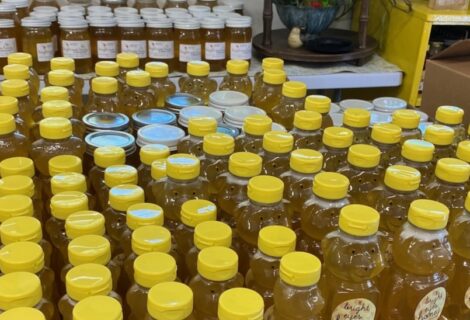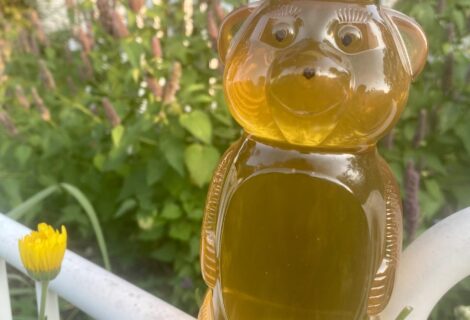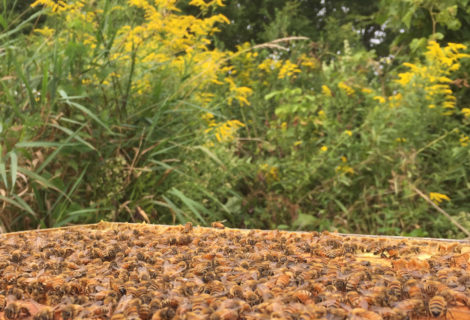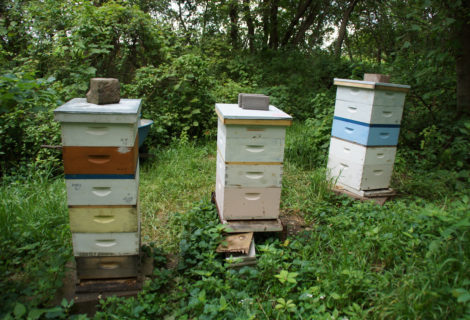The 2024 Honey-makers
- 4 colonies overwintered in our MN yards and 2 overwintered in Iowa at my folks
- 7 new packages were purchased (same as last year I think) with 2 being sponsored by our Douglas trail area friends.
- That makes 13 production colonies. Each year there are issues or interesting things encountered with one or more of the colonies. This hear was no different, but the weakest colonies still put away a super or more of honey. When I reference a “super”, that is a “medium” box with 6 1/4 inch frames – 9 or 10 frames to the box.
- In addition to the production colonies, I “pulled” a split and hived a swarm. My dad also purchased a couple of Russian honeybee nuc colonies from Golden Ridge Honey Farms that keeps a bee yard right next door to my folk’s property. So that is 4 more starter colonies to hopefully make it through the winter and make honey next year. Normally I’d be making a few more splits from overwintered colonies, but they didn’t look terribly strong at the beginning. That sure changed later though.
Capturing the swarm was serendipitous and fun. I happened to come out to the bee yard as the swarm was forming on branch in front of the hives. It was three-lobed at first.
Within a matter of minutes though it coalesced into one large lobe that weighed down the branch.
I enjoyed watching the waggle dances of the scouts on the surface of the cluster of bees.
But I didn’t let them decide on a new location. I hived them in a deep box and they took off as a new colony. That was May 23, and actually there would have been time for this colony to put away extra honey, but they didn’t seem to like the old queen. She seemed to stop laying brood and on Aug 4, Evan and I noticed a number of new queen cells in the colony. You can see 4 of them on the next photo where they extend to the left off the bottom of the frame.
August 4th is actually when we first started harvesting honey this year. Evan helped me haul the boxes to the car, but here he is with a frame of honey that the bees have started to cap.
It was a blessing this year to be able to take extra trips to the bee yards and harvest just one or two supers at a time from the hives. This was less of a shock to the bees and allowed them to concentrate their focus on the remaining supers. A month later (by Sept 5), we had finished taking 47 supers off the hives, including the 7 my dad harvested in Iowa. That is a record for us.
Many of the hives still had a honey super left on them that they were working on and which I will leave for them for winter consumption if they are strong enough to go into winter. On Sept 7, we checked the hives in Iowa and the one that my dad stuck an extra honey supper on surprised us by having packed out one of the supers with a lot of honey. You can see in the photos how much dripping honey is caked at the top of the box just under the plexiglass inner cover that my dad is holding.
Doing multiple rounds of harvesting and colony checks also allowed me to get some mite treatments in earlier. Some colonies were carrying a very heavy mite load, while others were doing very well with none to just a couple mites detected. In the following photo, you might be able to spot a mite crawling on one of the drone larvae/pupae.
The formic treatment strips do knock the mites back, but subsequent mite counts reveal they are much less effective in killing the mites that already inside capped cells with the larvae. So, we will see how they fair later in the fall. In the fall of 2023, I lost quite a few colonies that just absconded their hives, likely due to illness in the colony, and mites are large contributor to ill health going into winter. Especially concerning with mite load (30%) was the following hive that is one box short of tying a record for highest production for one of my hives. So that’s the fun part to help offset the mite load increasing with the bee population.
This hive stack was so big that there were laying workers in the honey supers above the queen excluder. The queen scent (pheromone) was so faint apparently, that the workers started laying drone eggs up there while the queen was still going to down in the two deeps at the bottom. Oh well. The honey looks nice an golden as it sits under its wax cappings that the bees expertly create and apply. They are truly amazing creatures that so efficiently do their thing across the varied landscapes as they scent for those nectaries the diverse flowers supply.


















Recent Comments